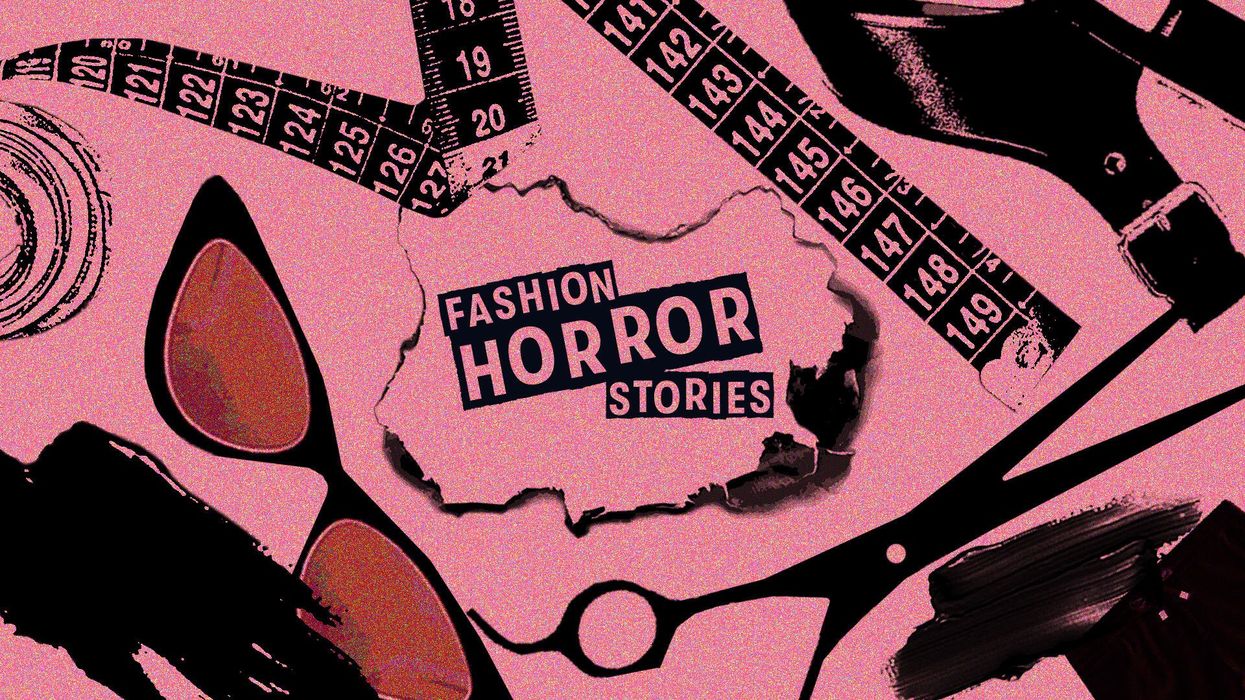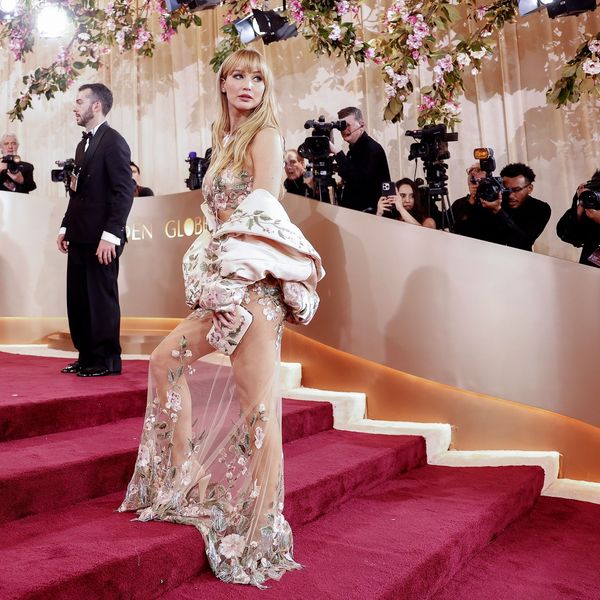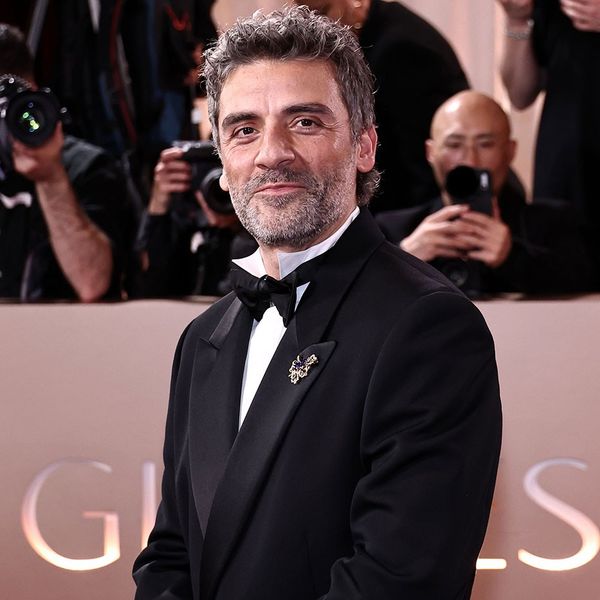A New York Fashion Intern Leaves Disillusioned After a Peek Behind the Industry Curtain
As an intern for a designer and several big-name magazines, David learns that privilege takes precedence over creativity.

The fashion industry is known for its volatile creatives and unshakable self-seriousness. With our generation’s waning patience with abusive workplaces and megalomaniac bosses, these stories from our collective past are taking on a new light. Often dismissed flippantly as part of “paying our dues,” fashion veterans and current employees alike are re-examining their experiences with newfound clarity. Somehow, even in this relatively progressive era we’ve entered, the fashion industry remains one of the last bastions of unchecked and wildly inappropriate behavior. From former fashion interns to magazine assistants to models, we’re compiling an oral history of fashion workplace experiences in the series Fashion Horror Stories.
After hearing Gabriel’s experiences working in Fashion PR in the early aughts New York, and Lizzie’s experience at an LA-based indie fashion mag in 2018, here is an account from David—a former fashion intern who worked across several magazines, accessories departments, and a department store from 2009-2015.
How did you get involved in the fashion industry?
“I started working in fashion during my sophomore year of college in 2009. I left the New York scene in 2015, so that was about six years of working as a slave to fashion—quite literally since we were unpaid. After I left one magazine, there was a lawsuit from one of the interns after me demanding we get paid. It was happening at a few places around that time, and the next magazine I went to next started paying us $8 an hour, which is still relatively nothing.
“My first job in fashion I got through a friend in a sculpture class in my undergrad program. She was working for this evening wear designer. He essentially made D-to-B-list celebrity red-carpet gowns. I didn’t have a design background, so I was doing sample runs, getting buttons and zippers from the garment district, and grabbing food. An in-house stylist for that designer knew I was interested in styling and put me in touch with the Associate Accessories Editor at [a] big-name magazine. That was definitely the most Devil Wears Prada-y of all my internships. After that, I worked at a now-defunct men’s magazine before working as a buyer at a large fashion department store.”
What was the work environment like? What was your relationship with your colleagues?
“In any fashion environment, everything is an emergency. There’s lots of running around, short tempers, and nobody ever ate anything. I would be on the subway with thousands of dollars of product, and looking back, I’m surprised I was never robbed. When I was working there, there was no electronic system to track the samples; everything was on paper. If you couldn’t find the paper that documented an item, you were fucked. Editors would be screaming, ‘Where the fuck is this bag? We need to send it back to Chloé!’ Even if the bag was from a shoot two years ago when I didn’t work there, it had to be found. It was a lot like Miranda Priestly saying, ‘Find me that piece of paper I had in my hand yesterday morning.’ I was lucky to be in the accessories department; it was much more chill and less catty than the clothing department. Between the interns, we were all terrified and trauma-bonded because there was this overwhelming sense of urgency at all times—‘Fucking Saint Laurent needs their fucking samples immediately! Grab the Alexander Wang dress and return it now because it has to go to Italian Vogue!’
“There was definitely a rhythm to the industry, and you started to learn the ebb and flow of the seasons. I was working part-time while I was in school, but there would be nights we would have to stay til 10 p.m. The assistant would fall asleep on the couch, and when we came in the next morning, he would have spent the night. I was lucky; I became close friends with the other intern in the accessories department because we could offer each other a reality check. Someone to validate, ‘So is everyone here going to insane parties, not eating, getting yelled at, and working crazy hours, and no one seems to have a problem with it?’ And to have someone to commiserate with saying, ‘Yeah, this is crazy. You’re not crazy,’ was so helpful. Even when I wasn’t being actively targeted, you could sense the vibe and culture around you and think, ‘Ok, something’s not right here.’”
In what moments did you think to yourself, “Something’s not right here”?
“It’s not necessarily a horror story, but there were little things that were just catty—making fun of how I mispronounced ‘Pret à Manger, or if I described a sample as ‘cute’ they would correct me—‘Did you mean chic?’ Then there were some more intense moments, like when the Senior Accessories Editor called me over and then reamed me out for not having a notebook. After he screamed at me, I had a notebook glued to my chest at all times. There were some other questionable moments; for instance, one of the interns in our office was ESL, and my boss pulled me aside and asked me to replace him on answering phones because ‘Dior is wondering why he can’t pronounce certain brand names.’
“When I started working in fashion, I gathered pretty quickly that you need a lot of privilege. It was all about image. I was treated a bit differently because I was a boy and also appointed Head Intern, but in terms of Devil Wears Prada, I was definitely in the category of the ‘smart, fat one.’ Aka, you’re smart, reliable, and work really hard, but the image was always a problem. I didn’t dress poorly; I just didn’t wear suits. I remember I had a favorite pair of Theory pants, and one of my bosses one time pulled me aside and asked, ‘Do you have any other pants?’
“I realized that a lot of interns could assimilate through privilege. There were girls that would come in with Miu Miu, Prada, and Manolo Blahnik. It was bizarre because we all knew how much everything cost compared to the nothing that we were making. That’s when I realized that in order to succeed, you need to have someone pay for you. Either your parents paid for your living expenses, or there were girls that dated finance boys that would pay their rent. I knew a girl from New York who ended up at Teen Vogue after graduation, and her starting salary was 30 grand.
“A lot of these girls fit in with the culture, not only because their lifestyle was financed, but because they came from money. They knew all the name brands, the up-and-coming designers, the ‘in’ to the nightlife—all because they already had exposure to all these spaces. Who else could afford all the clothes and was willing to work for free? There was also a lot of schmoozing and networking that happened in the New York nightlife. I had interns who were obsessed with tracking where Alexander Wang or [the] Proenza Schouler designers were partying. Part of the appeal of working in fashion was definitely the ‘lifestyle’ for a lot of them. It was about who you slept around with and how much you wanted to invest in the scene. At that point, I was pretty disillusioned by the whole thing, so I didn’t go as full throttle as some of the other interns. I remember one of the interns got fired because they borrowed samples and wore them to parties.
“People in fashion really live in their own universe. When I worked at a giant department store, one of my VPs came around through the denim section and, picking up a pair of jeans, asked, ‘How much does this cost?’ I said, ‘About 98,’ and she said, ‘Oh, so it’s free!’ From someone making $20 an hour, it was funny to hear someone who had no relationship to reality. Anything under a hundred dollars? That’s basically free.”
When and why did you decide to leave the fashion industry?
“I was pretty level-headed from the beginning, and I knew it wasn’t going to be long-term, which helped me stay grounded in those ‘what the fuck’ moments. As I drew further and further away, it became so clear that this industry is about a corporate dance. It’s about the image, not the person. At the department store, I would have to change my shoes and put on a blazer to meet with the VP. I was told that if we were ever in an elevator together, I would have to memorize my ‘elevator pitch’ to her—aka highlight whatever numbers that month would make you look good. It was such a song and dance. Every interaction was a little performance that we put on.
“After a few years, I saw that since the fashion world is very, very cyclical; there is a pattern that gets very formulaic. It was hard to realize that there wasn’t as much creativity in the business as I thought. Even when I worked with a stylist, I could see how little creative freedom she really had. ‘Vogue needs us to shoot this for the advertisers,’ or ‘Half this shoot is going to be Prada because our boss is friends with their marketing team.’ There were a lot of politics and constraints that replaced all the creativity and fun with capitalism and internal politics. Don’t get me wrong, in the 2010s, designers were having a lot of fun—when Riccardo was at Givenchy, Marc Jacobs had fun collections, Consuelo Castiglioni hadn’t sold Marni yet, and Lee McQueen was still alive—some of it felt very inspiring.
“There are some interesting things happening in fashion now, but it’s in a very different place. Everything is about mass appeal, fast fashion, viral moments, and ad dollars. A lot of people are regurgitating what they know and see. Influencers change the game with this ‘I saw Regina wearing army pants and flip flops, so I bought army pants and flip flops’ strategy. Clout and entertainment are getting more involved, so you have Pharrell Williams as the head of LV—sure, he is qualified, but the business is all about clout. It’s becoming rare to see people in the business for the art of it. I’m seeing less creativity and innovation and more advertising and sponsorships.
“The worst is when companies use progressive politics as a marketing tool, like featuring minority models when it doesn’t reflect anything on the inside of the brand. I would hear the strategy behind those decisions, and it was all just money. The difference between the brand and the projected image was huge—they’re highlighting all these minority brands and models while treating their minority employees like shit. A lot of it is clout and marketing, which is a big part of my disillusion with corporate America. It’s important that, while it’s easy to get seduced by the industry, it’s rare to find people willing to dissect and analyze what keeps it afloat. It’s all about the corporate dance.”




